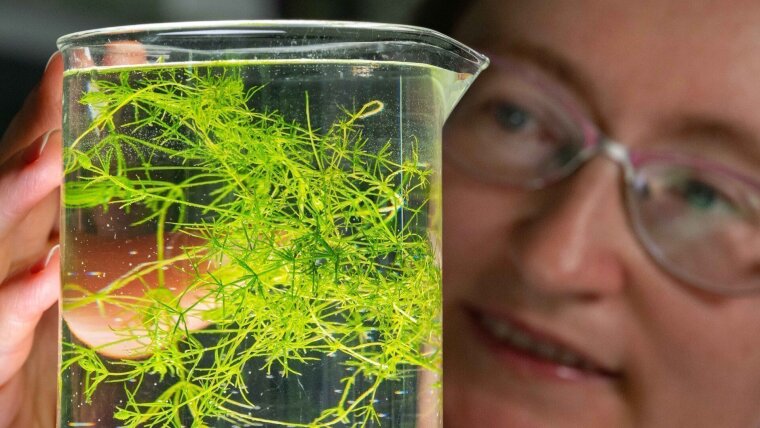
- Life
Published: | By: Ute Schönfelder
Source article
Around 550 million years ago, the Earth’s surface was a barren land mass surrounded by oceans. Almost all lifeforms that had evolved up to that point existed exclusively in the oceans. Then, however, the first plants made their way onto land—not only making the Earth greener but also fundamentally transforming the atmosphere, the climate and overall conditions of life on our planet.
“Until now, it has not been clear exactly how these plants successfully took root on land,” says Prof. Dr Günter Theißen of the University of Jena. A Professor of Genetics, Theißen explains that coming ashore entailed a whole host of challenges for plants. In comparison with aquatic life, terrestrial life is hugely stressful: temperature fluctuations, aridity and ultraviolet radiation are just some of the factors that make life on land less than idyllic for plants.
An international research team from the USA and Germany, including Prof. Theißen and his team along with researchers from Europe, Asia and the Americas, has now investigated the molecular mechanisms vital to the evolution of land plants. The researchers have published their findings in the latest issue of a prestigious journal, Nature Genetics.
Drawing conclusions about the common ancestors of algae and land plants
For a long time, insights into the distinctions between the first land plants and their aquatic relatives remained inadequate. “It’s only thanks to new technical capabilities, such as comparative genomic analysis, that we can answer relevant questions,” emphasizes Theißen. A working group at the University of Göttingen is coordinating “MAdLand — Molecular Adaptation to Land: Plant Evolution to Change”, a Priority Programme funded by the German Research Foundation (DFG). In the course of this project, the team has examined the genomes of algae that are a sister taxon to land plants today: filamentous Zygnematophyceae. By analysing the data generated through sequencing of the algae’s genomes, the researchers were able to draw conclusions as to the most recent common ancestor of Zygnematophyceae and land plants—which could have paved the way for plants to conquer the Earth.
“Contrary to long-standing assumptions, not Charophyceae, which have a highly complex structure, are most closely related to land plants but rather these simple counterparts,” says Dr Lydia Gramzow, a member of Theißen’s team. The researchers in Jena have analysed what are known as the MADS-box genes in these algae. This family of genes controls mechanisms including development processes in flowering plants, especially the development of flowers and fruit. “However, MADS-box genes also occur in other plants and are thought to be generally responsible for their ability to form different organs and structures, as is characteristic of land plants today,” says Gramzow.
The researchers discovered that Zygnematophyceae actually have two variants of MADS-box genes. In addition to the variant typically found in land plants today, they also contain a variant exclusively found in algae. “Our supposition is that, in the course of evolution, the MADS-box gene typically found in algae was lost in the ancestors of land plants, which led to the variant characteristic in land plants today gaining the upper hand,” as Lydia Gramzow outlines. The loss of one variant and the increase in the other may have contributed to the ancestors of land plants becoming able to develop cellular structures and organs that made them better adapted to the harsh conditions on land.
Furthermore, by comparing the genomes of algae with those of other plants, the research team discovered other key genes that enabled the first terrestrial plants to react to environmental factors, including by producing enzymes for cell wall synthesis.
Original publication:
Xuehuan Feng et al. Genomes of multicellular algal sisters to land plants illuminate signaling network evolution. Nature Genetics 2024. https://www.nature.com/articles/s41588-024-01737-3External link

07743 Jena Google Maps site planExternal link